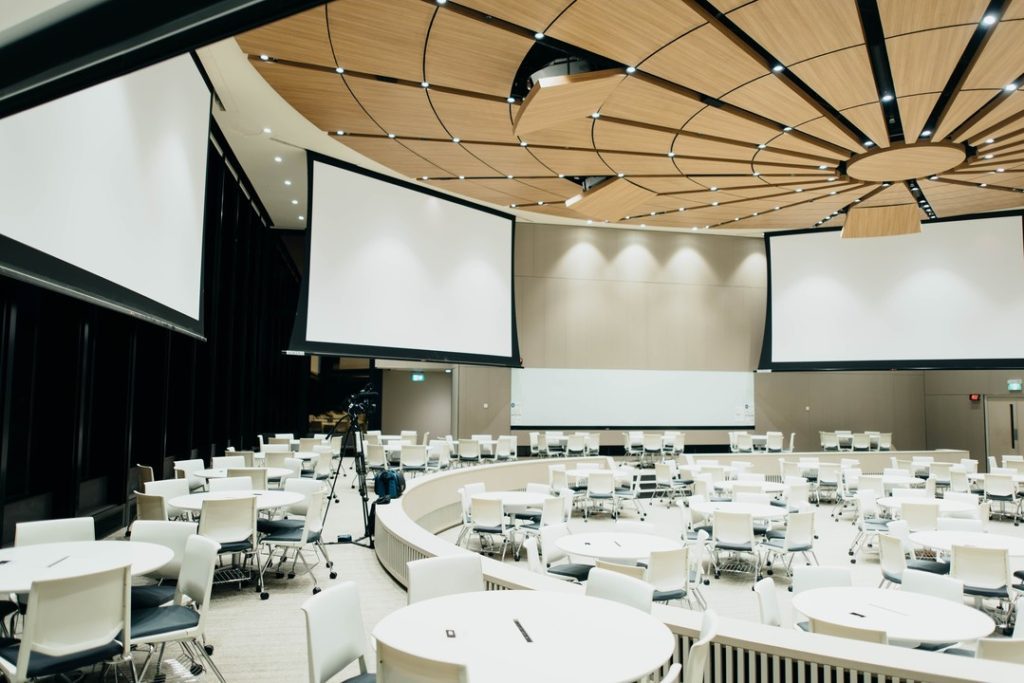We’re not beating up on the USB-C connector. It’s a good product that does what it’s intended to do, especially in the consumer market. Able to handle peripherals like a mouse, a keyboard, a webcam, a printer and/or a soundbar, it’s also able to handle video output to a display, simultaneously. This has come especially in handy over the last two years as consumers have been outfitting home offices to function as smoothly as their workspaces.
Despite its position among the latest and greatest connectivity tools, however, the USB-C is an example of consumer-driven technology interface that isn’t built for a typical meeting room’s requirement. As such, it puts commercial product manufacturers in catch-up mode, while installation specialists scour the landscape for rare compatible products and alternatives. Tech specialists are now charged with educating clients on the obstacles surrounding the use of USB-C connectors at work, and disappointing desires, based on an extremely limited array of integratable solutions.
In short, there are three main challenges to implementing USB-C connectors in a commercial setting.
Challenge one: Power
The introduction of the USB-C was seen as a way to take what used to be two connectors on a PC and make it into one smaller, thinner formfactor. Its expected scenario also carries power, so it can charge a laptop and/or several peripheral devices while simultaneously combining functionalities.
When those capabilities are moved beyond consumer use to commercial operations, the USB-C options likely won’t meet the full power specifications for what it was designed and intended to provide. It will offer the correct formfactor, but it will also truncate the full use-case of the technology. This can lead to disappointment and misaligned expectations for customers who anticipated the same functionality and features at home, that they had at work.
Challenge 2: Integration
When trying to use a USB-C in a larger integrated commercial applications, even more limitations arise. The connector is only intended to extend native USB capabilities. However, when it comes to options for switching, routing, or other dynamic functions needed in an office space, there are extremely few ways to achieve those results. The one-stop universal cable that people use at home simply doesn’t work well in a commercial installation; in some cases, it may be possible to connect a webcam, soundbar, and video, but switching that in-room function between multiple PC locations is virtually impossible
As a secondary challenge, clients who insist on using consumer-focused technology in the commercial space will experience the shortcomings of customer support and see these product features not as inherent limitations, but as functional or design failures. What is pushed to its limits to work in a limited capacity is often seen as “not working at all”, leading to further customer dissatisfaction and frustrations.
Challenge three: Space
Because the USB-C is designed for the convenience of the consumer, it functions well in a smaller, predictable space; a home office, or an individual workstation where components are in unchanging, close proximity to one another. One of the main reasons for this is that at full specification, the USB-C is technically limited to one meter (just over 3ft). Now imagine trying to integrate that into an office setting, where a conference room may have a large table at its center, a soundbar 15 feet away, a cable cubby in the middle of the table, and a laptop five feet away in front of the presenter. Not a simple fix to say the least.
Many consumer tech-focused product manufacturers are now targeting the “prosumer” market – professionals who are desiring to pay lower prices for enterprise-worthy solutions. Companies known for making webcams, wireless keyboards, and mice are now producing “commercial” solutions and other equipment marketed for the commercial space. The challenge? These designers do not account for the challenges of the workspace in their design, creating products with a native USB-C connector that is limited by its extension solutions, switching options, able limitations, etc., before it ever gets specified.
For tech designers and installers, the true challenge becomes communicating these concerns to a client in a way that engages them in the details, and also warns them of the pitfalls.
“Yes, you have a USB-C at home but no, it likely won’t work in your office, and here’s why.” The commercial market is moving very slowly in delivering solutions when compared to the consumer market; so, enlisting the help of a commercial industry expert will help ensure a successfully integrated system, specifically designed for today’s workplace.



